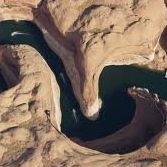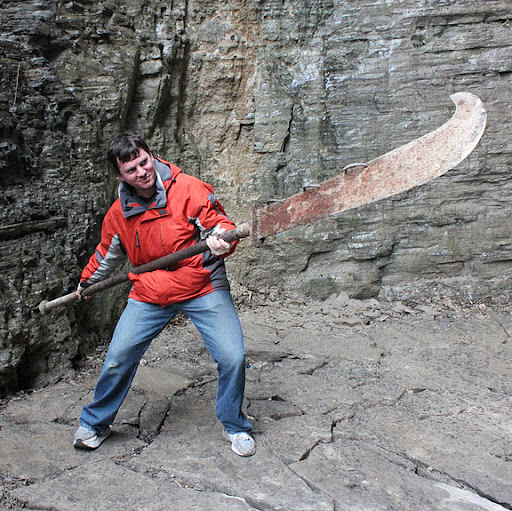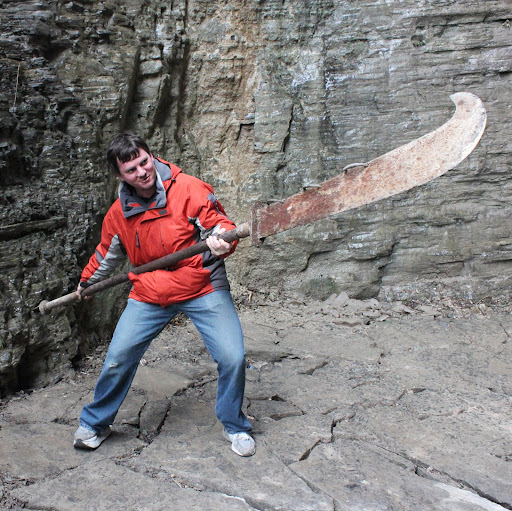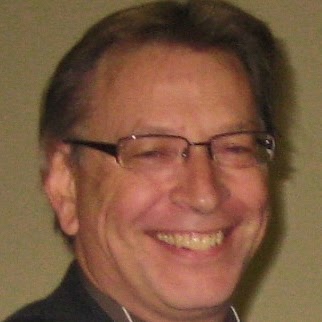David Franklin Lindeman
age ~70
from Minneapolis, MN
- Also known as:
-
- David F Lindeman
- David Franklin Lindenman
- Phone and address:
-
1025 25Th St, Minneapolis, MN 55414
(612)3629606
David Lindeman Phones & Addresses
- 1025 25Th St, Minneapolis, MN 55414 • (612)3629606 • (612)3629607
- 306 Oak Grove St, Minneapolis, MN 55403 • (612)8721752
- Viroqua, WI
- Owatonna, MN
- Savannah, GA
- San Francisco, CA
Lawyers & Attorneys

David Lindeman - Lawyer
view sourceOffice:
David G. Lindeman, P.C.
Specialties:
Criminal Defense
Driving While Intoxicated
Misdemeanors
Felonies
Juvenile Criminal Law
Traffic Violations
Sex Crimes
Assault and Battery
Drug Crimes
Domestic Violence
Theft
White Collar Crime
Burglary
Driving While Intoxicated
Misdemeanors
Felonies
Juvenile Criminal Law
Traffic Violations
Sex Crimes
Assault and Battery
Drug Crimes
Domestic Violence
Theft
White Collar Crime
Burglary
ISLN:
916860163
Admitted:
1999
University:
Texas State University-San Marcos, B.A., 1992
Law School:
St. Mary's University of San Antonio School of Law, J.D., 1999
Us Patents
-
In-Situ Short-Circuit Protection System And Method For High-Energy Electrochemical Cells
view source -
US Patent:6548206, Apr 15, 2003
-
Filed:Jun 2, 2000
-
Appl. No.:09/586218
-
Inventors:Michel Gauthier - La Prairie, CA
Michael K. Domroese - South St. Paul MN
Joseph A. Hoffman - Minneapolis MN
David D. Lindeman - Hudson WI
Joseph-Robert-Gaétan Noël - St-Hubert, CA
Vern E. Radewald - Austin TX
Jean Rouillard - Saint-Luc, CA
Roger Rouillard - Beloeil, CA
Toshimi Shiota - St. Bruno, CA
Jennifer L. Trice - Eagan MN -
Assignee:3M Innovative Properties Company - St. Paul MN
Hydo-Quebec Corporation - Montreal -
International Classification:H01M 1050
-
US Classification:429120, 429 62, 429 66
-
Abstract:An in-situ thermal management system for an energy storage device. The energy storage device includes a plurality of energy storage cells each being coupled in parallel to common positive and negative connections. Each of the energy storage cells, in accordance with the cells technology, dimensions, and thermal/electrical properties, is configured to have a ratio of energy content-to-contact surface area such that thermal energy produced by a short-circuit in a particular cell is conducted to a cell adjacent the particular cell so as to prevent the temperature of the particular cell from exceeding a breakdown temperature. In one embodiment, a fuse is coupled in series with each of a number of energy storage cells. The fuses are activated by a current spike capacitively produced by a cell upon occurrence of a short-circuit in the cell, thereby electrically isolating the short-circuited cell from the common positive and negative connections.
-
Method For Transferring Thermal Energy And Electrical Current In Thin-Film Electrochemical Cells
view source -
US Patent:6569559, May 27, 2003
-
Filed:Jul 3, 2000
-
Appl. No.:09/609444
-
Inventors:Roger Rouillard - Beloeil, CA
Michael K. Domroese - South St. Paul MN
Joseph A. Hoffman - Minneapolis MN
David D. Lindeman - Hudson WI
Joseph-Robert-Gaétan Noël - St-Hubert, CA
Vern E. Radewald - Austin TX
Michel Ranger - Lachine, CA
Anthony Sudano - Laval, CA
Jennifer L. Trice - Eagan MN
Thomas A. Turgeon - Fridley MN -
Assignee:3M Innovative Properties Company - St. Paul MN
Hydro-Quebec Corporation - Montreal -
International Classification:H01M 1050
-
US Classification:429120, 429 66, 429178, 205347
-
Abstract:An improved electrochemical generator is disclosed. The electrochemical generator includes a thin-film electrochemical cell which is maintained in a state of compression through use of an internal or an external pressure apparatus. A thermal conductor, which is connected to at least one of the positive or negative contacts of the cell, conducts current into and out of the cell and also conducts thermal energy between the cell and thermally conductive, electrically resistive material disposed on a vessel wall adjacent the conductor. The thermally conductive, electrically resistive material may include an anodized coating or a thin sheet of a plastic, mineral-based material or conductive polymer material. The thermal conductor is fabricated to include a resilient portion which expands and contracts to maintain mechanical contact between the cell and the thermally conductive material in the presence of relative movement between the cell and the wall structure. The electrochemical generator may be disposed in a hermetically sealed housing.
-
Multiple Draw Gap Length Orientation Process
view source -
US Patent:20080083998, Apr 10, 2008
-
Filed:Oct 6, 2006
-
Appl. No.:11/539304
-
Inventors:William W. Merrill - White Bear Lake MN, US
David D. Lindeman - Hudson WI, US -
International Classification:B29D 7/01
B29D 11/00 -
US Classification:264 134, 264 27
-
Abstract:A method of forming an optical film includes stretching a polymer film in first draw gap of a first length along a machine direction, at a first draw ratio; and further stretching the polymer film in second draw gap along a machine direction, wherein the step of stretching in the first draw gap is isolated from the step of stretching in the second draw gap.
-
Processes For Improved Optical Films
view source -
US Patent:20080085383, Apr 10, 2008
-
Filed:Oct 6, 2006
-
Appl. No.:11/539335
-
Inventors:William W. Merrill - White Bear Lake MN, US
David D. Lindeman - Hudson WI, US -
International Classification:B44F 1/10
B29D 7/01 -
US Classification:428 29, 264 134
-
Abstract:A method of forming an optical film results in a film having a useful central 60% portion with a caliper variation of about 5% or less of an average thickness of the film. The method includes selecting a draw ratio λ in a first in-plane stretch direction, setting an effective draw gap defined by a length L and a width W, and stretching a polymer film at the draw ratio and effective draw gap. The effective draw gap is set such that the stretching step fits into one of two regimes, the first regime referred to as a uniaxial regime and characterized by a β equal to or less than about 1.0; and the second regime referred to as a planar extension regime and characterized by a β equal to or greater than about 10.0. The disclosure also describes an optical film formed by the method.
-
Processes For Improved Optical Films
view source -
US Patent:20120068371, Mar 22, 2012
-
Filed:Nov 23, 2011
-
Appl. No.:13/303569
-
Inventors:William W. Merrill - White Bear Lake MN, US
David D. Lindeman - Hudson WI, US -
International Classification:B29D 11/00
-
US Classification:264 27
-
Abstract:A method of forming an optical film results in a film having a useful central 60% portion with a caliper variation of about 5% or less of an average thickness of the film. The method includes selecting a draw ratio λ in a first in-plane stretch direction, setting an effective draw gap defined by a length L and a width W, and stretching a polymer film at the draw ratio and effective draw gap. The effective draw gap is set such that the stretching step fits into one of two regimes, the first regime referred to as a uniaxial regime and characterized by a β equal to or less than about 1.0; and the second regime referred to as a planar extension regime and characterized by a β equal to or greater than about 10.0. The disclosure also describes an optical film formed by the method.
-
Thermal Conductor For High-Energy Electrochemical Cells
view source -
US Patent:61175846, Sep 12, 2000
-
Filed:Jul 25, 1997
-
Appl. No.:8/900428
-
Inventors:Joseph A. Hoffman - Minneapolis MN
Michael K. Domroese - South St. Paul MN
David D. Lindeman - Hudson WI
Vern E. Radewald - Austin TX
Roger Rouillard - Beloeil, CA
Jennifer L. Trice - Eagan MN -
Assignee:3M Innovative Properties Company - St. Paul MN
-
International Classification:H01M 650
-
US Classification:429120
-
Abstract:A thermal conductor for use with an electrochemical energy storage device is disclosed. The thermal conductor is attached to one or both of the anode and cathode contacts of an electrochemical cell. A resilient portion of the conductor varies in height or position to maintain contact between the conductor and an adjacent wall structure of a containment vessel in response to relative movement between the conductor and the wall structure. The thermal conductor conducts current into and out of the electrochemical cell and conducts thermal energy between the electrochemical cell and thermally conductive and electrically resistive material disposed between the conductor and the wall structure. The thermal conductor may be fabricated to include a resilient portion having one of a substantially C-shaped, double C-shaped, Z-shaped, V-shaped, O-shaped, S-shaped, or finger-shaped cross-section. An elastomeric spring element may be configured so as to be captured by the resilient conductor for purposes of enhancing the functionality of the thermal conductor.
-
Surface Treating Article Including A Hub
view source -
US Patent:61361437, Oct 24, 2000
-
Filed:Feb 23, 1998
-
Appl. No.:9/027866
-
Inventors:Phillip M. Winter - Birchwood MN
Charles B. Dousette - Minneapolis MN
Jerome M. Fried - North Saint Paul MN
Yvonne I. Lund - Cottage Grove MN
David D. Lindeman - Hudson WI -
Assignee:3M Innovative Properties Company - St. Paul MN
-
International Classification:B32B 3500
-
US Classification:156584
-
Abstract:A surface treating article including a hub. The surface treating article and hub provide an improved mechanical interlock to each other. Preferably, the unitary surface treating article is molded to the hub.
-
Rechargeable Thin-Film Electrochemical Generator
view source -
US Patent:61209309, Sep 19, 2000
-
Filed:Jul 25, 1997
-
Appl. No.:8/900924
-
Inventors:Roger Rouillard - Beloeil, CA
Michael K. Domroese - South St. Paul MN
Joseph A. Hoffman - Minneapolis MN
David D. Lindeman - Hudson WI
Joseph-Robert-Gaetan Noel - St-Hubert, CA
Vern E. Radewald - Austin TX
Michel Ranger - Lachine, CA
Anthony Sudano - Laval, CA
Jennifer L. Trice - Eagan MN
Thomas A. Turgeon - Fridley MN -
Assignee:3M Innovative Properties Corporation - Saint Paul MN
Hydro-Quebec - Montreal -
International Classification:H01M 1050
H01M 612
H01M 400 -
US Classification:429 66
-
Abstract:An improved electrochemical generator is disclosed. The electrochemical generator includes a thin-film electrochemical cell which is maintained in a state of compression through use of an internal or an external pressure apparatus. A thermal conductor, which is connected to at least one of the positive or negative contacts of the cell, conducts current into and out of the cell and also conducts thermal energy between the cell and thermally conductive, electrically resistive material disposed on a vessel wall adjacent the conductor. The thermally conductive, electrically resistive material may include an anodized coating or a thin sheet of a plastic, mineral-based material or conductive polymer material. The thermal conductor is fabricated to include a resilient portion which expands and contracts to maintain mechanical contact between the cell and the thermally conductive material in the presence of relative movement between the cell and the wall structure. The electrochemical generator may be disposed in a hermetically sealed housing.
Name / Title
Company / Classification
Phones & Addresses
President
HEALTHSENSE, INC
Management Consulting Services
Management Consulting Services
1191 Northland Dr #100, Saint Paul, MN 55120
(800)5761779, (952)4007300, (952)4007299
(800)5761779, (952)4007300, (952)4007299
OHIO CHAPTER AMERICAN POLITICAL ITEM COLLECTORS
Isbn (Books And Publications)




The Evolution of Pension Systems in Eastern Europe and Central Asia: Opportunities, Contraints, Dilemmas and Emerging Practices
view sourceAuthor
David C. Lindeman
ISBN #
0821348078
License Records
David Edward Lindeman Dds
License #:
5419 - Expired
Category:
Dentistry
Issued Date:
Jun 10, 1986
Effective Date:
Mar 1, 1989
Type:
Dentist
Resumes

David Lindeman
view sourceLocation:
Greater Minneapolis-St. Paul Area
Industry:
Media Production
Skills:
Graphic Design
Photography
Video Conferencing
Streaming Media
Video
Broadcast
Video Editing
Final Cut Pro
Television Production
Mac
Video Production
Social Media
Multimedia
HD Video
Videography
Post Production
Editing
Premiere
Photography
Video Conferencing
Streaming Media
Video
Broadcast
Video Editing
Final Cut Pro
Television Production
Mac
Video Production
Social Media
Multimedia
HD Video
Videography
Post Production
Editing
Premiere

David Lindeman
view sourceLocation:
United States

David Lindeman
view sourceLocation:
United States

David Lindeman
view sourceLocation:
United States

David Lindeman
view source
David Lindeman
view source
David Lindeman
view source
David Lindeman
view source
David Lindeman
view source
David Lindeman
view source
David Lindeman
view source
David Lindeman
view sourceClassmates

David Lindeman
view sourceSchools:
Eucalyptus Elementary School Hawthorne CA 1975-1981, Hawthorne Intermediate School Hawthorne CA 1981-1983
Community:
Jeannette Valencia, Thomas Jenkins

David Lindeman
view sourceSchools:
Holland High School Holland MI 1975-1979

University High School, S...
view sourceGraduates:
David Lindeman (1982-1986),
Roger Hochschild (1978-1982),
Christian du Lac (1981-1985),
Lisa Elliott (1983-1987)
Roger Hochschild (1978-1982),
Christian du Lac (1981-1985),
Lisa Elliott (1983-1987)

Eucalyptus Elementary Sch...
view sourceGraduates:
David Lindeman (1975-1981),
Sheri Miyamoto (1965-1969),
Tomika Hughey (1979-1983)
Sheri Miyamoto (1965-1969),
Tomika Hughey (1979-1983)

Hawthorne Intermediate Sc...
view sourceGraduates:
Delilah Navarrette (2000-2004),
Reida Childress (1994-1995),
David Lindeman (1981-1983),
Minor Gonzalez (1983-1984),
David Quant (1991-1993)
Reida Childress (1994-1995),
David Lindeman (1981-1983),
Minor Gonzalez (1983-1984),
David Quant (1991-1993)

Eaton High School, Eatoni...
view sourceGraduates:
Garry Stallmann (1984-1988),
Evelyn MacKenzie (1962-1966),
Judy Marchant (1966-1970),
Lorne Cridland (1969-1973),
Dave Lindeman (1991-1995)
Evelyn MacKenzie (1962-1966),
Judy Marchant (1966-1970),
Lorne Cridland (1969-1973),
Dave Lindeman (1991-1995)
Flickr
Googleplus

David Lindeman
Lived:
Minneapolis, MN
Work:
University of Minnesota - Sr. Media Producer

David Lindeman
Work:
Waterstone Mortgage Corp - Senior Loan Officer

David Lindeman
Work:
University of Minnesota - Video Producer

David Lindeman

David Lindeman
Bragging Rights:
Direct cousin of George Washington. Booya.

David Lindeman

David Lindeman

David Lindeman
Youtube
Myspace
Get Report for David Franklin Lindeman from Minneapolis, MN, age ~70

















